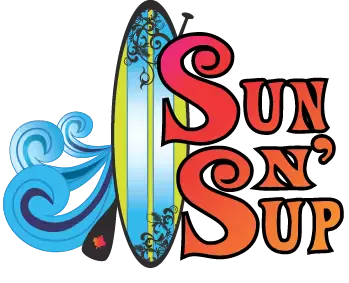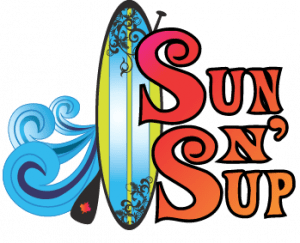SO HOW DO I CHOOSE A BOARD?
Inflatable (or ISUPs)
Red Paddle Co. in particular has been making inflatable boards since 2008 and they have always believed riding an inflatable shouldn’t mean compromise on performance, design or quality. Red Paddle Co boards are stiffer and more durable than the competition, and have been designed so you can paddle anywhere.
The liberating thing about an inflatable standup paddleboard is how easy it is to take with you everywhere you go. You don’t need a van or a roof rack to take it on a road trip, and once you’re at the airport, just check in your ISUP backpack with the rest of your gear. When you get to the water, the board takes just a few minutes to inflate, and then you’re free to explore. Being able to take your board with you wherever you go is what inflatables are all about, but that wouldn’t mean much if they didn’t perform. Red Paddle uses industry leading MSL Fusion technology, exclusive to Red Paddle Co, to put their boards on a level with hard boards. And they are not just adding inflatable boards to a range of hard boards – they only make inflatable boards, and they are a wee bit fanatical about them.
In just a few minutes you take the SUP out the car and hit the water. They are portable, durable and ready to ride. Live in a condo or have zero storage or would like to take traveling? ISUP’s are the fastest growing part of paddle boarding. They are very durable and extremely well made and come in many shapes and sizes from yoga, surfing and race models. This is a great idea for a family board. A great investment and extremely versatile. Check out our Red Paddle Co. and Kahuna brands that we carry, you won’t be disappointed. We have a great selection available to demo!
Family SUP
The heavier the rider, the more board volume and width you will need for your SUP to be stable. Extra width isn’t always better. A wider board typically has less glide and will not track as straight. Shorter riders also have a tougher time paddling these wider boards. Keep in mind, larger boards means carrying around extra size/weight.
If you are looking for the one size fits all board for the family, you will need to consider the largest paddler. Smaller paddlers can always use bigger boards, but bigger riders won’t be as successful on a smaller board.
Volume size: Two boards of the same volume can have completely different handling and stability characteristics. The shape, materials and design will determine which board will make the biggest difference on performance and stability. Choosing durability over performance in a multi use board makes more sense for long lasting enjoyment.
All Round Surf Style
Perfect as a beginner board for that first purchase. They generally have a broad range of use for more than one paddler. Designed more for fun with stability. Cruising with your family or pooch to taking to your local surf break and catch those beginner waves. Easily recognized by their iconic surfboard shape or planing hull these versatile boards perform well in all conditions.
Touring
These boards are designed for flat water and open ocean. They are usually longer than the all-around surf style which gives more speed, and have a pointed nose similar to a kayak and shaped like a “V” on the bottom called a displacement hull. This helps the board slice through the water smoothly, increase speed and glide. The extra length allows the board to track straighter. The rails are usually rounded, at least in the front section, for more glide and speed. Most touring boards are wide enough to be stable for beginners. However, “race” boards are like touring boards but narrower for speed and typically made with lighter materials. These skinny race boards can be far more challenging for beginners and novice paddlers.
Downwind
Downwinding is paddling from A to B with the wind at your back and riding the wind swells. The aim is to get your board up on a plane and keep them gliding from swell to swell. This is similar to surfing and the closest we get inland to riding waves, but the wind here in the Okanangan can be very strong, making it perfect for downwind runs. You just have to organize a shuttle with friends to get you back to where you want to be. Very addicting you just can’t get enough. Always let someone know where you are going and approximately when you will be back. Carry some hydration and a water proof case for a cell phone, always have a PFD and use your leash with extra leash loops. Regular wear and tear on your leash loop can easily break during one of these sessions. Be prepared just like you would if you went for a hike in the woods.
A board longer than (11 feet and up) with a planning hull and a decent amount of rocker in the nose can be good for downwinding. Planning hull design that features rounded & high volume rails. These boards offer tremendous stability to deal with rough swell conditions. The tail rocker also provides maximum control and surf-ability when catching a glide. The longer boards will make it easier to catch those wind, rolling ocean swells and the rocker will help keep the nose from diving under the water and slowing you down.
Check out our SIC Bullet’s for downwinding. The Bullet or F series is considered the mountain bike of the water, planning hull boards have no limits on where they can go. These boards are most recognizable by their flat planning bottom, pointed nose and pin tail shapes. While the original shapes were derived from open ocean and downwind designs, these shapes have proved to be the most well rounded, sea-worthy, all around shapes in SUP. Planning boards have less rocker than a surfboard which means they track and glide very well although not as well as a displacement hull. They are designed to excel in cross-chop, side-chop with a tail wind or wave scenarios and can be surfed in small to mid size waves. If you are looking for a board with unbridled access to any condition for unlimited fun, then there is no better design.

